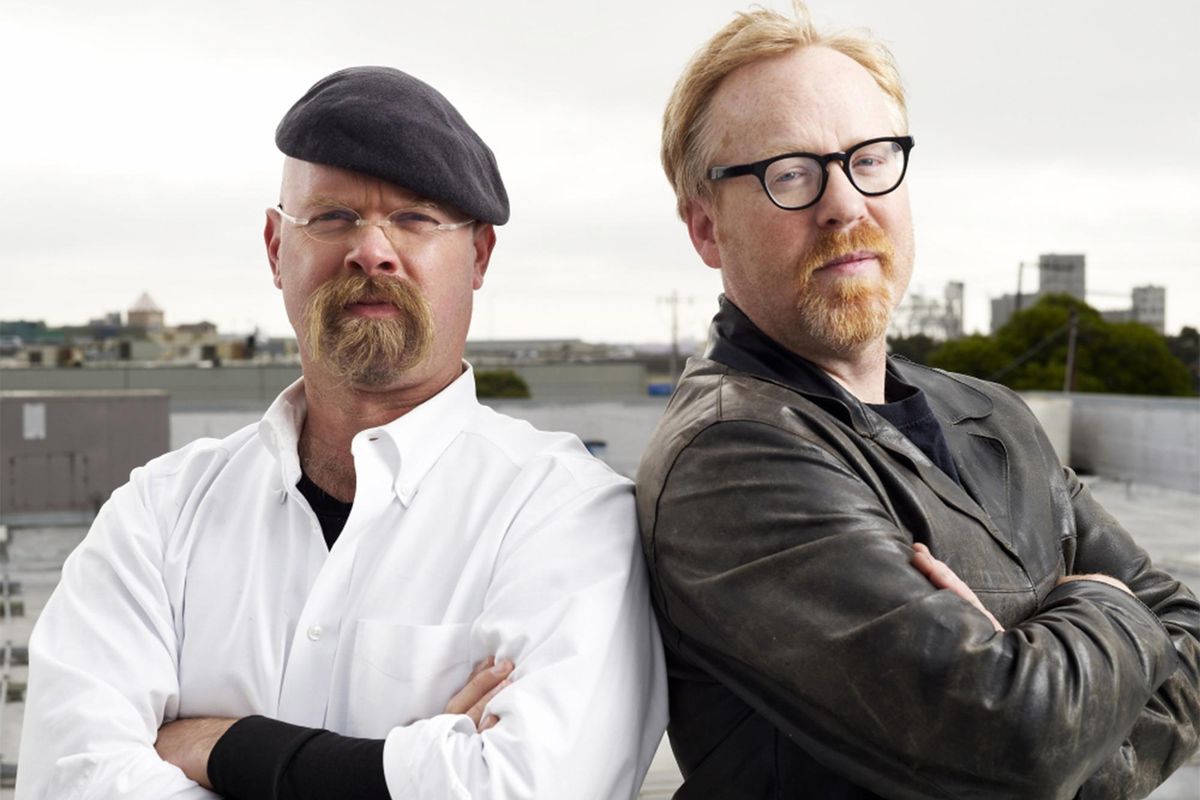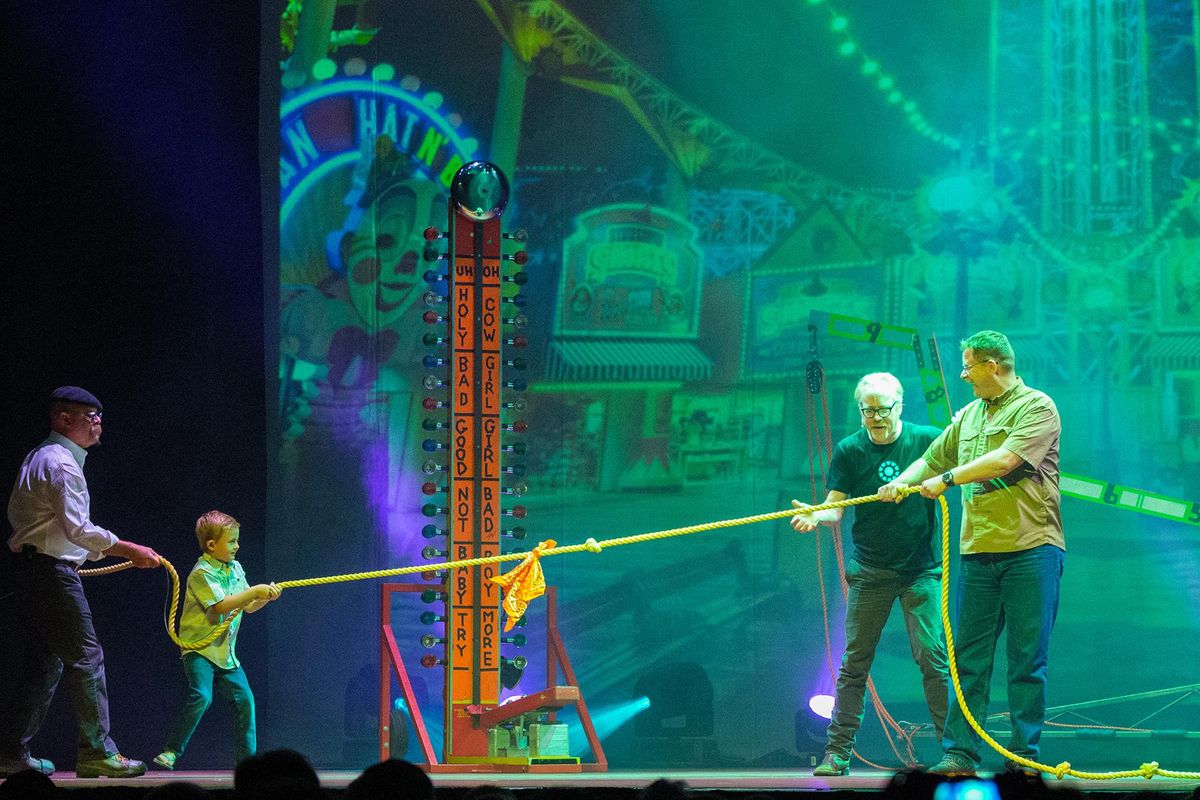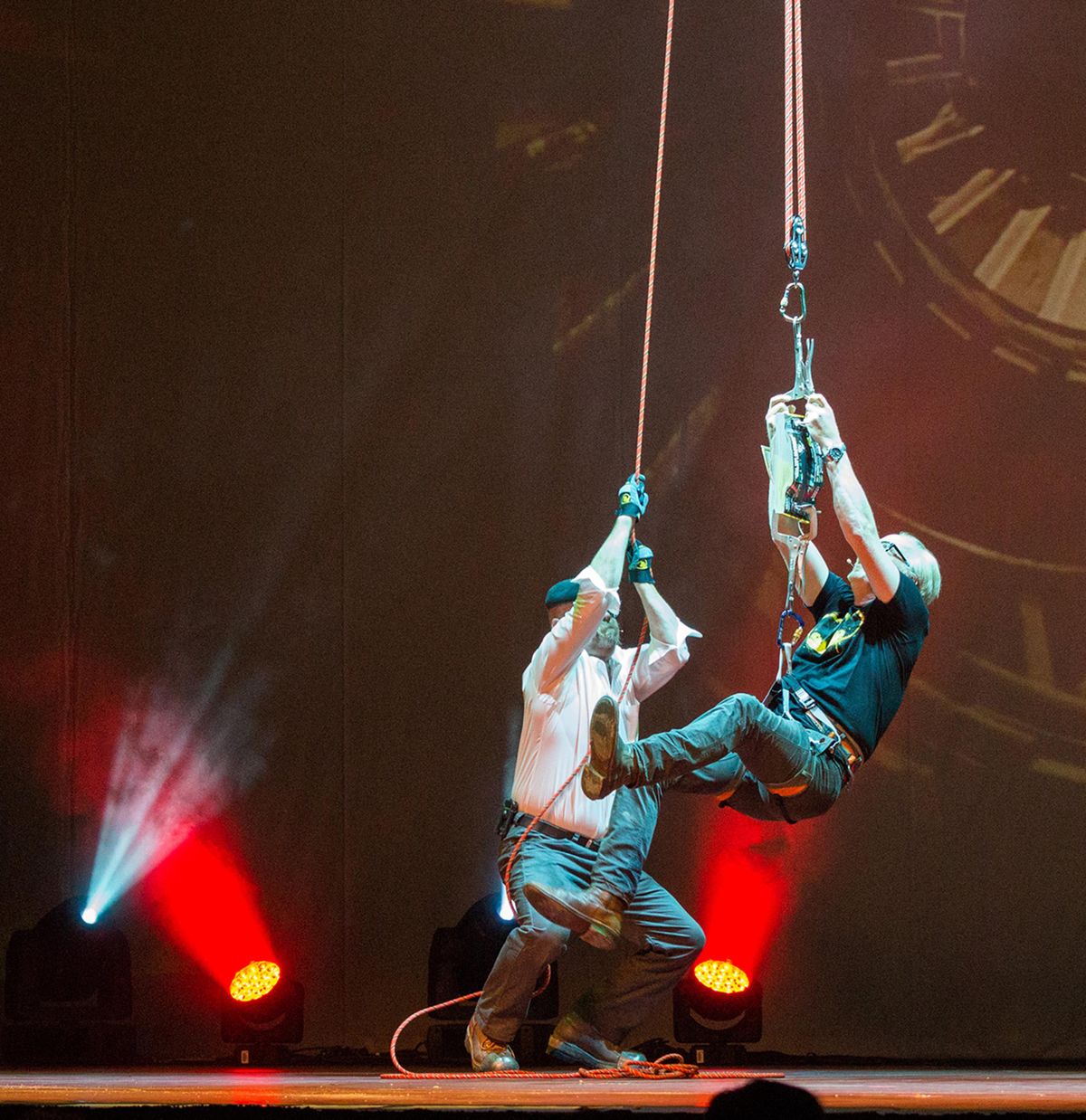‘Mythbusters’ goes out with a bang
Jamie Hyneman and Adam Savage bring an all-new, live stage “Mythbusters” show to Spokane.
Since 2003, the Discovery Channel series “Mythbusters” has used insanely elaborate and often explosive scientific experiments in an attempt to debunk (or prove) every urban legend, tall tale, cultural cliché and outlandish movie stunt imaginable. Hosts Jamie Hyneman and Adam Savage, who bring some of those experiments to the INB Performing Arts Center on Friday, make for the perfect television odd couple: Savage is the affable, joke-spouting showman, while Hyneman is the steely, soft-spoken skeptic.
But this particular tour is a bittersweet one for Savage and Hyneman: “Mythbusters” is coming to an end next year (they’ve already completed filming), and Savage is moving on to other scientific ventures without Hyneman. (The tour is, appropriately, subtitled “Jamie’s Farewell Tour.”)
“He’d prefer to be at home working in his shop,” Savage said of his hosting partner. “He asked last year to be phased out, so this is our last lap. … I love touring. The stage stuff doesn’t come as naturally to (Jamie), and he’s the first to admit it. But it’s not that he doesn’t like it. Jamie’s having as much fun on this tour as I am.”
Savage and Hyneman previously brought their live show to Spokane in 2012, but this upcoming show is totally different from the last one.
“It’s a series of vignettes – some of them about our history with ‘Mythbusters,’ some of them about science in general, some of them personal stories,” Savage said. “It’s like what you’d expect to see in a magic show, except that at the end of each vignette, instead of an illusion, there’s a little bit of scientific understanding.”
And much like a magic show, the “Mythbusters” touring performances involve, in Savage’s words, “a metric ton of audience participation.”
“There’s a lot of people onstage over the course of the show,” Savage said. “It’s so satisfying for me to go out and interact with the crowd. … I’m really blown away by the energy of the crowds we’re getting.”
Over the course of 14 seasons, “Mythbusters” has examined hundreds of long-standing mysteries and put them to the test. For example, will swallowing Pop Rocks and Coke rupture your stomach? (It won’t.) Could MacGyver’s makeshift weapons actually work? (Some of them would.) Could those three prisoners have successfully escaped Alcatraz and survived back in 1962? (They certainly could have.)
Savage is currently working on pitching a new TV show, which he says will be “very different” from “Mythbusters,” as well as prepping another science-based touring production. But he admits that leaving “Mythbusters,” the show that made him a household name, was something of a wrenching experience.
“It was very intense,” Savage said. “A friend of mine is an actress who was on a show for six years, and she told me, ‘Get ready, because it’s really going to mess you up.’ And it was great that she did that, because it prepared me for going through all the stages of grieving about this show. It was not easy. I’ve done this show longer than I’ve had any job in my whole life, so saying goodbye to it is very difficult.”
Savage believes the long-running series has certainly had an impact on science in popular culture: Not only did he and Hyneman educate their viewers, but they also made science look fun.
“It wasn’t part of our mission. It wasn’t something we set out to do,” Savage said. “All we’ve been trying to do is satisfy our curiosities and tell a story about how we satisfied our curiosities. … Budget cuts almost always mean that schools lose materials for kids to get their hands dirty, and ‘Mythbusters’ has had resonance because we get our hands dirty. This is how kids learn. You can’t just get them to memorize a bunch of facts and teach to a test in order to get kids to be interested in the world. You’ve got to let them hold onto things and take them apart and put them back together.”
Any myths they didn’t get to debunk?
“There’s a small myth I had to let go of in the last season because we just didn’t have time to tackle it. It’s a Native American myth about hunting ducks. If you want to hunt ducks, you float pumpkins in their duck ponds and get them used to pumpkins. Then when you want to have duck for dinner, you put a pumpkin on your head, carve two eye holes out of it and swim out among the ducks. And they won’t pay any attention to you because you’re just another pumpkin, and you can just reach out and grab them. I was dying to try it! … I’m a student of the long con! I’ve read every book about con men. I love that entire branch of culture, so the idea that you can con the animal kingdom is just brilliant.”
Any particular myths from the show that stand out?
“In the last few seasons, we’ve done some of our best work. I got to fly a U2 plane above 70,000 feet. Getting to dress as Indiana Jones and getting to test myths from one of my favorite films for two weeks. … Alcatraz is a real stunner. It stands out as one of the great early episodes. To be honest, we substantively contributed to the body of knowledge about Alcatraz. I don’t think a builder ever looked at that FBI report to see what they could learn from it. They even let us squeeze through the holes that Frank Morris and the Anglin brothers carved in their cells. What an amazing opportunity.”
What he’s learned about storytelling through science.
“There have been so many myths over the years where I’ve learned something small but crucial both about science and telling the story of science. In addition to the stuff I’ve learned making the show and doing the experiments, I’ve also learned even more about telling a story about that, and how to communicate what’s thrilling about that. A story of learning is the only story there ever was. One of the most profound epiphanies I’ve had doing the show is that art and science are not at opposite ends of the spectrum. They’re not even flip sides of the same coin. They sit right next to each other as two different genres of storytelling, both vital.”



